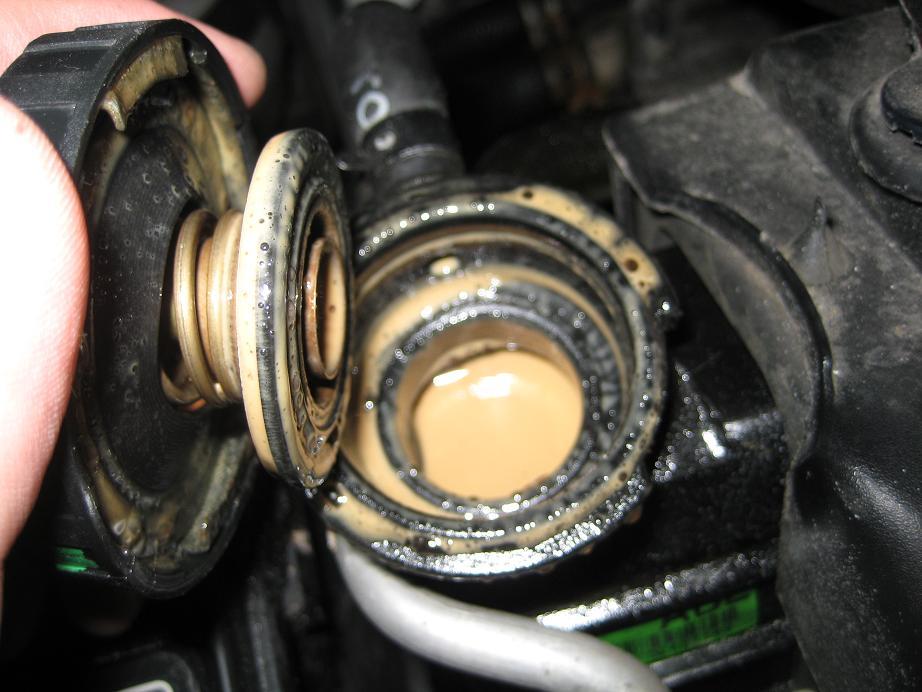Do you know how to fix milky oil in the engine? If not, then you are in the perfect place to find the answer. We, at this moment, guide you with all the causes, reasons and fixing ways you must follow while having milky leakage from your combustion. Taking good care of the vehicle is mandatory for having a long life of the car. With time, some people become experts while dealing with the car’s fundamental issues while others need to learn and visit a mechanic.
However, evening learning a lot, and we come to face a variety of new issues, and if it is related to the engine, then a matter of concern development is ordinary. Thus, whatever may be the reason, we always find a solution to the problem, which is a perfect tendency of the human race.
Table of Contents
What Is Milky Oil In Engine?
Milky oil is the indication of coolant in the engine. So, generally, it is oil mixed with coolant, which results in the formation of white residue. Its appearance would result in the non-lubrication of the engine, thus facing friction, heat and abrasion. Hence, you cannot drive your vehicle with milky oil as it may cause premature wear and damage to the engine.
Hence, you cannot drive your vehicle with milky oil as it may cause premature wear and damage to the engine.
We could efficiently deal with the milky oil in the engine by taking the car on a long drive under normal circumstances. All this would allow the engine to reach the optimum temp and evaporates the moisture.
What Are The Causes Of Milky Oil In the Engine?
Usually, the issues could treat by taking the car on a long drive, as mentioned above. However, whereas some cases need proper guidance and concern, we need to know the cause of the problem.
Here are a few of the causes of milky oil in the engine, which are briefly described below:
1. A Natural Build-Up Of Moisture
We can observe moisture everywhere around us, and the only difference is somewhere it is in excess and somewhere less. So, for example, if you stay in cold areas, the chances of moisture build-up in your vehicle’s engine are more compared to common areas.
The reason for the development of milky stuff in the engine is that you haven’t driven the car for so long. However, no need to worry can easily be solved when the engine warms up at its maximum working temperature. At its maximum temperature, the moisture build-up would eliminate through evaporation.
Reaching the optimum temperature could be done by taking a vehicle to a long drive or drive the car for thirty minutes on the highway at 30MPH.
2. Blown Head Gasket
The blown head gasket is a severe issue; thus, it’s a matter of concern.
If you drive your car frequently with the engine reaching the optimal operating performance and still observing the milky oil or traces of humidity, you are dealing with the blown head gasket problem. The initial purpose of the gasket is to prevent the engine oil and coolant from mixing.
Thus, mixing would compromise the vehicle’s cooling system, which results in overheating the engine, hence causing engine blowouts.
3. Poor Maintenance
 Few people have a habit of cleaning their car with pressure washers. But, unfortunately, when cleaning the engine bay, these pressure washers induce high pressure on the engine, thus increasing the chances of having a milky oil cap.
Few people have a habit of cleaning their car with pressure washers. But, unfortunately, when cleaning the engine bay, these pressure washers induce high pressure on the engine, thus increasing the chances of having a milky oil cap.
So, you see, regular washing of the car is sometimes noteworthy. Hence, sensitive areas must clean under low-pressure steam to avoid such issues. Also, taking the car for a ride afterwards usually solves the problem.
How To Fix Milky Oil In Engine?
The fixation of the milky stuff in the engine could be performed depending upon the causes of the problem. Thus, the type of issue determines the solution to the problem. So, let’s discuss this in detail.
First of all, you should know various signs which determine the fault:
- A sudden loss of engine power.
- Unexplained coolant loss.
- Misfire on cold startup.
- Intermittent or constant engine running causing too hot or overheating.
Now, let’s have a brief intro to few ways to deal with the problem:
1. Clean The Reservoir
When you notice the milky stuff in the engine, this is undoubted because of leakage of coolant into the combustion chamber. Thus, this mixing causes colour change and cause the engine to run higher than usual.
Eventually, this all leads to a blown oththe e f head gasket ultimately. To avoid these issues, we should have a regular smooth cleaning of the reservoir. And if the condition is not in control, we need to change the reservoir, which is an expensive repair.
2. Check Your Oil Dipstick
Milky oil in the dipstick indicates the engine malfunctioning. If you observe the milk-like fluid on the dipstick, then please check the engine coolant also. Coolant loss means failing in the cooling system and thus resulting in engine overheating.
So, while dealing with this problem, you need to change the dipstick oil and clear all the faults related to the dipstick. All this requires professional guidance; hence visiting the mechanic is the better option.
3. Hyper-Lube: Quality High-Performance Products
If you face any accident or malfunctioning in the vehicle, then high-lube products provide a certain level of protection to your car. But, in general, these products act as additives for your engine and can often ward off the problems like oil and coolant mixing.
Thus, the hyper-lube can potentially add extended life, performance, and fuel economy benefits essential for properly working vehicles.
How Much Does It Cost To Fix?

The fixation cost may vary according to the cause of the problem. In few cases, it may cost negligible, while in other cases, it is a way expensive to repair.
The average repair cost may lie between $400 to $450, along with the labour charges.
Frequently Asked Questions:
So,here are some of the frequently asked questions about does milky oil always mean head gasket , what does it mean when the motor oil is milky etc?-
Does Milky Oil Always Mean Head Gasket?
What Does It Mean When Motor Oil Is Milky?
Why Does My Oil Look Like Mud?
Can A Head Gasket Be Fixed?
How Much Does A Blown Head Gasket Cost To Fix?
Conclusion
I hope all the readers got their answers and have no more queries related to the topic. So, now we wish you know how to fix milky oil in the engine. If you have any more doubts related to this, you may freely comment below, and we’ll answer all of the questions as soon as possible.



